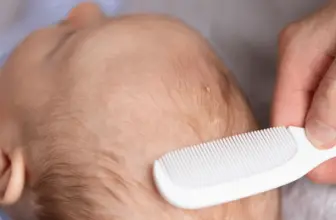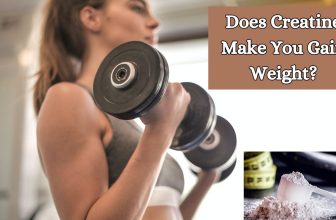What is The Minimum Internal Cooking Temperature for Whole Lobster?
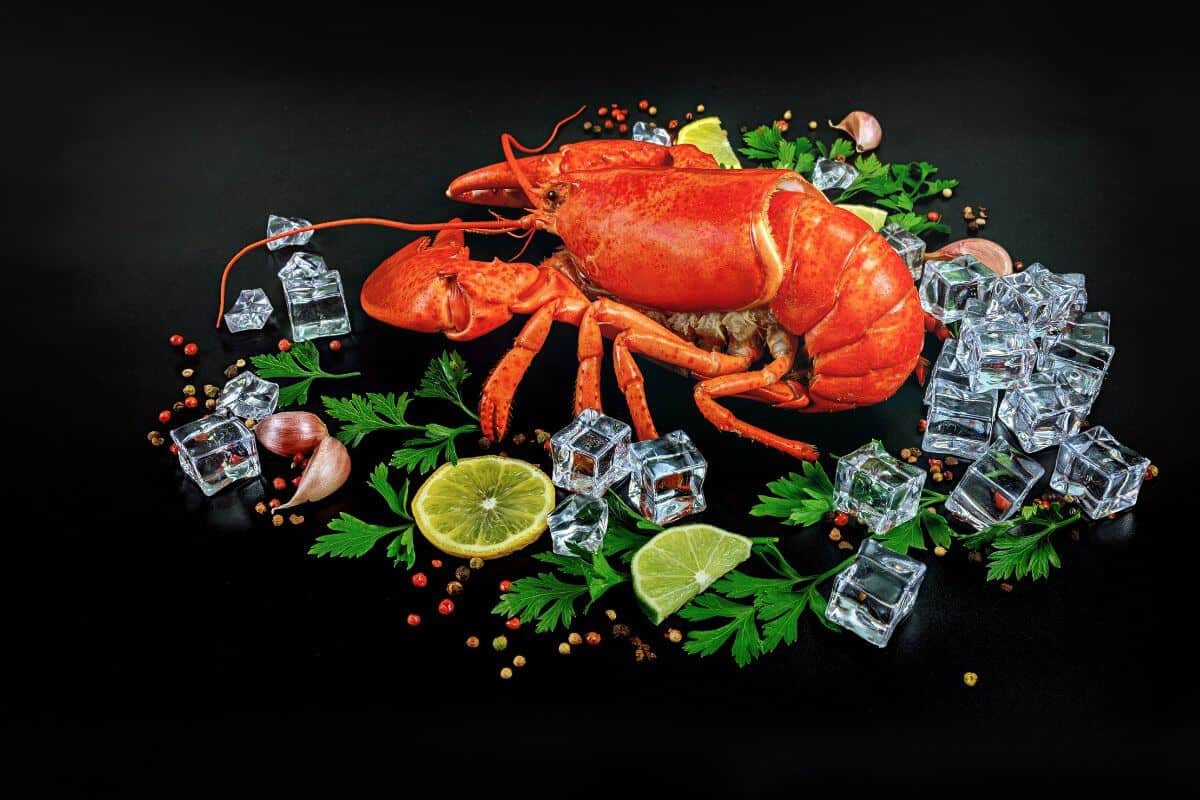
Indulging in a perfectly cooked whole lobster is a culinary delight that seafood enthusiasts savor. However, to ensure that your lobster is safe to eat, it’s crucial to cook it to the correct internal temperature.
So, what is the minimum internal cooking temperature for a whole lobster?
The minimum internal cooking temperature for whole lobster is 140°F (60°C). It’s essential to reach this temperature to ensure food safety, eliminate parasites, and achieve the desired texture and taste. Visual cues like a bright red shell, firm meat, and a curled tail indicate a fully cooked lobster.
In this article, we will explore the minimum internal cooking temperature for the whole lobster. Also, the reasons why it’s essential, how to check for doneness, and the visual cues of a fully cooked lobster. Keep reading!
What is The Minimum Internal Cooking Temperature for Whole Lobster?
When cooking whole lobster, the minimum internal cooking temperature to ensure it is safe to consume is 140 degrees Fahrenheit (60 degrees Celsius). It is essential to reach this temperature to eliminate any potential bacteria, viruses, or parasites that may be present in the lobster.
Lobsters should be cooked until the meat is opaque and firm and the shell turns bright red. This indicates that the lobster is fully cooked and ready to be enjoyed.
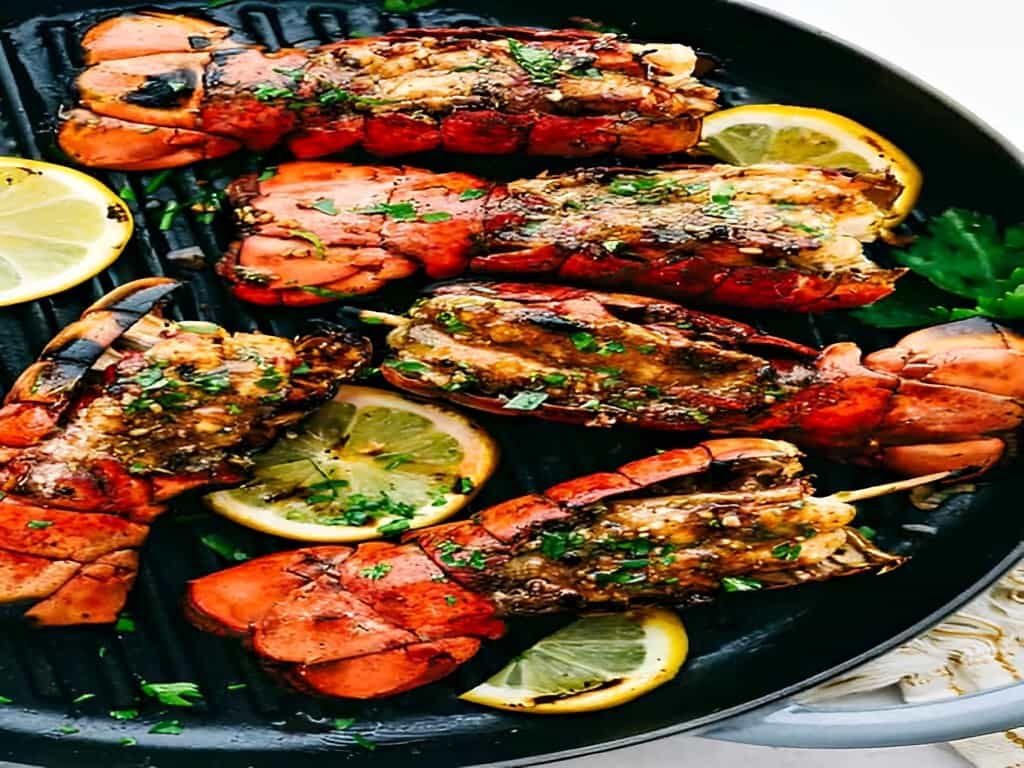
Source: therecipecritic
Overcooking the lobster can result in tough and rubbery meat. So it’s essential to monitor the cooking process and remove the lobster from heat as soon as it reaches the appropriate temperature.
Read More: What Does Tuna Taste Like?
Why is it Essential to Cook Lobster to the Correct Temperature?
Cooking lobster to the correct internal temperature is essential for several reasons.
- Food Safety: Lobsters, like other seafood, can harbor bacteria, viruses, or parasites that may cause foodborne illnesses. Cooking lobster to the correct temperature destroys these harmful pathogens, ensuring that the lobster is safe to consume.
- Parasite Elimination: Lobsters can sometimes contain parasites, such as the bacteria Vibrio or the “red worm” or “spiny-headed worm” parasites. Cooking lobster to the correct temperature helps eliminate these parasites, reducing the risk of infection.
- Texture and Taste: Cooking lobster to the correct temperature ensures that the meat is tender, succulent, and flavorful. Overcooking can produce tough and chewy meat, while undercooking may leave the lobster raw and unappetizing.
Cooking lobster to the correct internal temperature ensures its safety, eliminates parasites, and achieves the desired texture and taste.
How to Check The Internal Temperature of Lobster?
To check the internal temperature of the lobster, you can use a meat thermometer. Here’s how.
- Step 1: Insert the thermometer probe into the thickest part of the lobster meat, avoiding contact with the shell or bone. This will give you the most accurate reading.
- Step 2: Ensure that the thermometer is not touching any shell fragments or cartilage, as this may affect the temperature reading.
- Step 3: Leave the thermometer in the meat for a few seconds until the temperature stabilizes.
- Step 4: The recommended minimum internal cooking temperature for whole lobster is 140 degrees Fahrenheit (60 degrees Celsius). Make sure the lobster reaches this temperature throughout its meat.
What Are The Signs of A Fully Cooked Lobster?
Apart from checking the internal temperature, visual cues can indicate a fully cooked lobster. Here are the signs to look for.
- Shell Color: The lobster shell turns bright red when cooked. This vibrant red hue indicates that the lobster is fully cooked.
- Meat Texture: The meat inside the lobster should be opaque and firm. It should no longer appear translucent or jelly-like.
- Tail Curl: When cooked, the lobster’s tail should curl tightly. This is a natural reaction due to the heat and is a sign that the lobster has been adequately cooked.
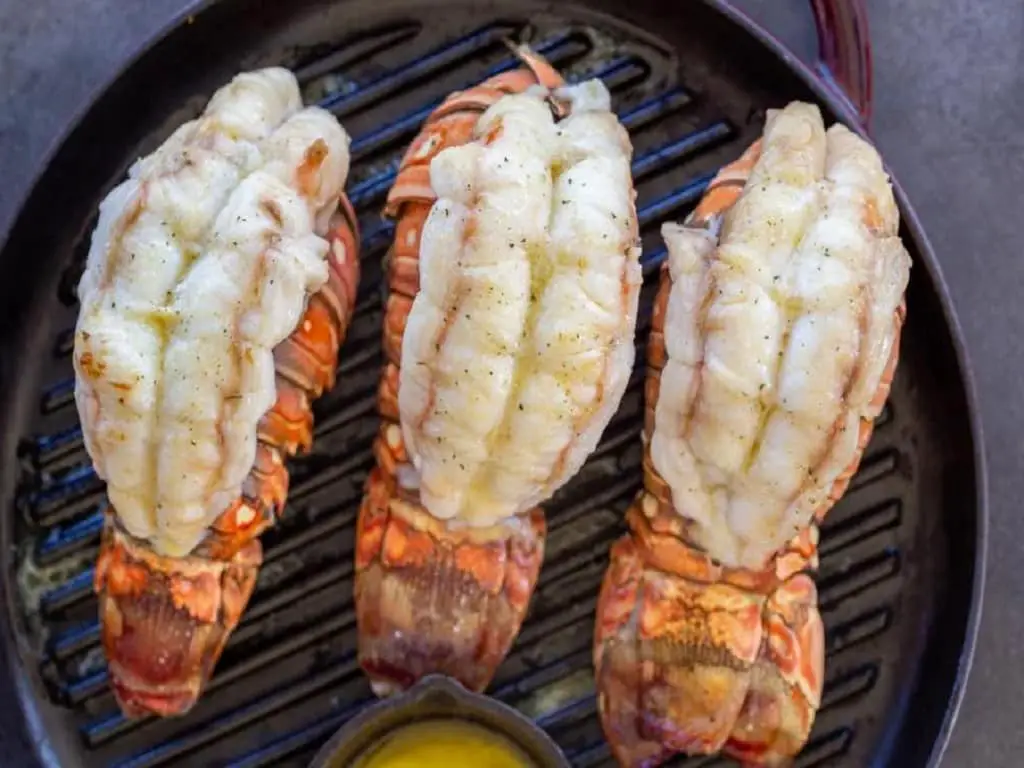
Source: momsdish
Observing these visual cues and confirming the internal temperature with a thermometer ensures that your lobster is fully cooked and ready to be enjoyed.
Also Read: What Foods are High in Carbs?
How Long Does It Takes to Cook Lobsters Properly?
When it comes to cooking lobsters, the time it takes can vary depending on the cooking method and the size of the lobsters. Here’s a simple guide to help you cook lobsters properly using different ways.
1. Boiling Method
Boiling lobsters is a classic and straightforward method that ensures even cooking and retains the natural flavors of the meat. Follow these steps to boil your lobsters to perfection.
- Step 1: Fill a large pot with water and add salt for flavor.
- Step 2: Bring the water to a rolling boil, then carefully place the lobsters into the boiling water.
- Step 3: Cover the pot and start the timer.
- Step 4: Cook for the recommended times based on the lobster size.
|
Lobster Size |
Cooking Time for Boiling |
| 1-pound lobster |
8-10 minutes |
|
1.25-pound lobster |
10-12 minutes |
| 1.5-pound lobster |
12-14 minutes |
|
2-pound lobster |
15-18 minutes |
2. Steaming Method
Steaming lobsters is a popular method that helps preserve the natural juices and tenderness of the meat. Follow these steps to steam your lobsters to perfection.
- Step 1: Place a rack in a pot and add water, salted lightly.
- Step 2: Bring the water to a boil.
- Step 3: Gently put the lobsters in the pot, making sure not to overcrowd.
- Step 4: Cover the pot and start the timer.
- Step 5: Cook for the recommended times based on the lobster size.
|
Lobster Size |
Cooking Time for Steaming |
| 1-pound lobster |
10-12 minutes |
|
1.25-pound lobster |
12-14 minutes |
| 1.5-pound lobster |
14-16 minutes |
|
2-pound lobster |
18-20 minutes |
3. Baking Method
Baking lobsters in the oven provides a slightly different flavor profile and allows for additional seasoning options. Follow these steps to bake your lobsters to perfection.
- Step 1: Preheat the oven to 400 degrees Fahrenheit (200 degrees Celsius).
- Step 2: Place the lobsters on a baking sheet or baking dish.
- Step 3: Brush them with melted butter or your preferred seasoning.
- Step 4: Bake them in the preheated oven.
- Step 5: Cook for the recommended times based on the lobster size.
|
Lobster Size |
Cooking Time for Baking |
| 1-pound lobster |
20-22 minutes |
|
1.25-pound lobster |
22-25 minutes |
| 1.5-pound lobster |
22-25 minutes |
|
2-pound lobster |
25-27 minutes |
4. Grilling Method
Grilling lobsters adds a smoky flavor and a slightly charred texture to the meat, making it a perfect option for outdoor gatherings. Follow these steps to grill your lobsters to perfection.
- Step 1: Preheat the grill to medium-high heat.
- Step 2: Split the lobsters in half lengthwise.
- Step 3: Brush them with melted butter or marinade.
- Step 4: Place them flesh-side down on the grill.
- Step 5: Grill for about 5-6 minutes.
- Step 6: Flip them and continue grilling shell-side down for another 4-6 minutes.
- Step 7: Adjust the cooking time based on grill heat and lobster size.
Remember, these times are approximate and can vary. Check the internal temperature with a meat thermometer to ensure the lobsters are properly cooked. The minimum internal temperature for lobsters is 140 degrees Fahrenheit (60 degrees Celsius).
Properly cooked lobsters will have a bright red shell, firm and opaque meat, and an internal temperature of at least 140 degrees Fahrenheit. Following these guidelines will help you cook delicious and safe lobsters.
Lobster Handling And Important Food Safety Information
Here are some essential guidelines to follow when handling lobster to ensure food safety.
- Keep all lobster products refrigerated or frozen until you can use them.
- If you have frozen lobster, thaw it in the refrigerator.
- It’s essential to cook live lobsters on the same day they arrive.
- Non-live lobster products can be frozen for up to 30 days, but for the best quality, consuming them within one day of delivery is recommended.
- Please be aware that legal sea foods mail-order products are processed in a facility that handles fish, shellfish, milk, soy, wheat, egg, peanuts, and tree nuts. If you have any allergies to these ingredients, exercise caution.
- Eating raw or undercooked lobster may increase the risk of foodborne illness.
- To minimize any health risks associated with consuming undercooked lobster, cook it thoroughly.
Please keep in mind that the information given is a general guideline. Following appropriate food safety practices and referring to your specific lobster product instructions or guidelines is crucial.
Read More: What Should I Eat for Weight Loss?
Frequently Asked Questions (FAQs)
How Do I Know If a Whole Lobster is Fresh Before Cooking?
When selecting a whole lobster, look for signs of freshness, such as a lively and active lobster that moves its claws and tail. The shell should be intact, without any cracks or strong odors. Additionally, the eyes should be clear and not cloudy, indicating freshness.
Should I Cook The Whole Lobster With The Shell on Or Remove It Before Cooking?
It is generally recommended to cook the whole lobster with the shell on to protect the delicate meat and retain its moisture and flavor during cooking. However, if you prefer to remove the shell before cooking, be mindful of the reduced cooking time and take extra care to prevent the meat from drying.
How Long Can a Live Lobster Be Stored Before Cooking?
A live lobster can be stored in the refrigerator for up to 24 hours before cooking. Keeping it in a container or bag with a damp cloth or seaweed is best to maintain moisture.
Conclusion
In conclusion, cooking a whole lobster to the correct internal temperature is crucial for food safety and achieving the desired texture and taste.
The minimum internal cooking temperature for a whole lobster is
140°F (60°C). It eliminates harmful pathogens and parasites while ensuring the lobster is tender and flavorful.


